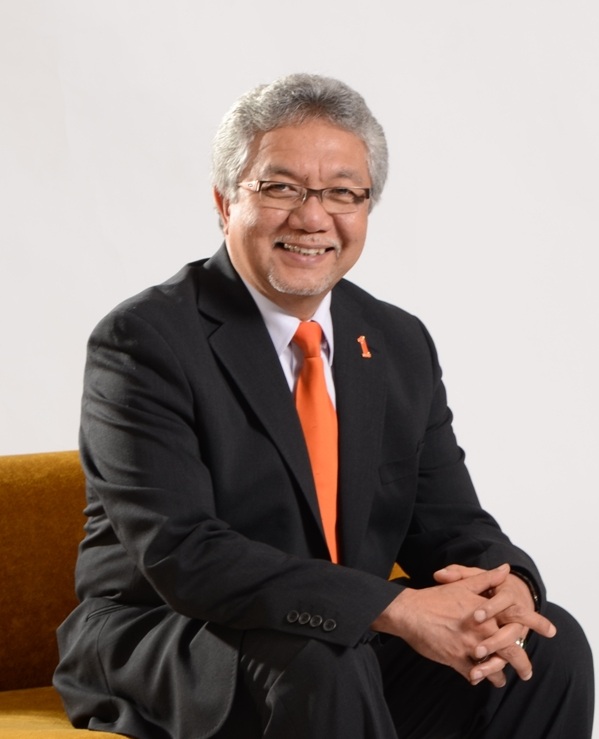TM: P1’s WiMAX can be a profitable business
By Goh Thean Eu May 9, 2014
- Main priority now is to ensure stability for P1's WiMAX business
- No immediate plans to change top management at P1

TELEKOM Malaysia Bhd (TM), the country’s dominant fixed-line operator, believes that there is plenty of room for improvement for Packet One Networks (Malaysia) Sdn Bhd (P1)’s loss-making WiMAX business.
According to TM group chief executive officer Zamzamzairani Mohd Isa (pic), there are synergies between TM and P1, and a partnership to leverage on each other’s strengths can potentially change P1’s fortune.
For the full year ending December 31, 2013, P1 recorded a loss of over RM77 million, an improvement if compared to the RM100 million in losses it registered in 2012.
“Currently, P1 is of value to us in the sense that they already have 500,000 customers. Also, they are operating in areas where perhaps TM does not have a very strong presence, in terms of fixed-line availability for broadband. So, there is a potentiallycomplimentary partnership.
“Of course, in the future, we are looking at LTE (Long Term Evolution), since P1 also has some valuable spectrum assets in that area. But LTE is a longer-term play.
"I think the WiMAX business itself needs to be stabilized first. We believe that it is a profitable business if we do it properly with the other partners,” said Zamzamzairani during a media conference held after its annual general meeting and extraordinary general meeting in Kuala Lumpur on May 8.
Both TM and P1 made headlines late March when TM announced its plans to acquire a majority stake in P1.
Under the deal, TM will buy a 57% stake in P1 for RM350 million. On top of that, TM will also pump in an additional investment of up to RM210 million into Green Packet Bhd via newly issued redeemable exchangeable bonds. These bonds can be exchanged for P1 shares held by Green Packet at a later stage.
Once the deal is completed, which is expected to be some time during the third quarter this year, TM via its wholly-owned unit Mobikom Sdn Bhd, will own the 57% stake, while Green Packet will see its stake reduced to about 30% and SK Telecom’s stake down to 13%.
Zamzamzairani added that TM has no immediate plans to change the top management line-up in P1.
“Although in the agreement we do have the rights to change the CEO and CFO, but we believe that we need to stabilize the company first and it will be prudent for us to maintain the current management for now, so that we can first fix the WiMAX business and then later in the future, we will see how it goes,” he said.
For now, TM is not ready to disclose information on when it believes P1 can be profitable. “I think it’s a bit too early to talk about that. Let us complete the corporate exercise first, then we will be able to provide more colour,” said Zamzamzairani.
TM to use 850MHz band for urban rollout?
Meanwhile, the company may be showing signs of interest in using the 850MHz band to roll out wireless services in urban areas.
Currently, TM has two blocks of 5MHz spectrum in the 850MHz band. These spectrums were allocated to TM to develop wireless services in the rural and sub-urban areas under the Universal Service Provision (USP) project. Under the current terms, it is not allowed to use the spectrum allocations, which is expiring end of this year, to push wireless services in urban areas.
Although there is still more than six months to go before TM’s 850MHz spectrum expires, there are already market speculations that TM is looking to get a hold of more spectrum under the 850MHz band. To recap, there is another two 5MHz blocks of spectrum in the 850MHz band currently not owned by any operators.
There were also talks that TM is looking at using the 850MHz band to push wireless services to the urban areas.
When asked about whether the company is keen on getting more spectrum to do just that, Zamzamzairani said “it really depends” on the Malaysian Communications and Multimedia Commission (MCMC).
“We can’t really comment on that right now as spectrum allocation is under the purview of MCMC and we are in continuous discussions with MCMC and the Ministry of Communication and Multimedia.
“The thing we are doing with the 850MHz today is we are doing technology refresh from the CDMA (Code Division Multiple Access) technology now, to LTE technology,” he added.
Related Stories:
TM agrees to buy controlling stake in P1
Casting aside old rivalry, TM begins its wireless revolution
A brief history of LTE
For more technology news and the latest updates, follow us on Twitter, LinkedIn or Like us on Facebook.


